|
GLACIER PARADISE
---a visit to see the plants in Waterton-Glacier International Peace Park
by Sandy Leven
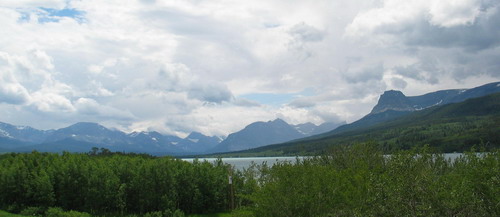
'I've never seen anything like them!'
'Acres of Erythronium grandiflorum !'
'They stretch as far as your eye can see!'
'You have to go and see them!'
These sentences were uttered in rapid succession when I told John Amand that we were heading for Alberta for our summer holidays. As you will see, the Erythroniums were every bit as wonderful this year as they were last year when John and Helen visited them.
To see the 'glacier lilies' at their best we had to reach Logan Pass, which is in Montana in the USA. Logan Pass is on the Continental Divide on 'Going-to-the-Sun Road'. We were staying in Lethbridge in Southern Alberta in Canada, so we had to cross into the USA. This took ages and should have been easy. It also cost us $6 US each for a green piece of card stuck in our passports. They will only accept US Dollars cash - no Canadian Dollars, Travellers Cheques or Credit Card Payments and you must have a decent amount of US currency on your person to prove you are not indigent. Airlines give the form 194 free if you land in the USA. There we were, already $24 US dollars poorer and even worse we had lost 2 hours in the border queue at Peigan. If we saw nothing else I was determined to reach the Erythronium meadows!
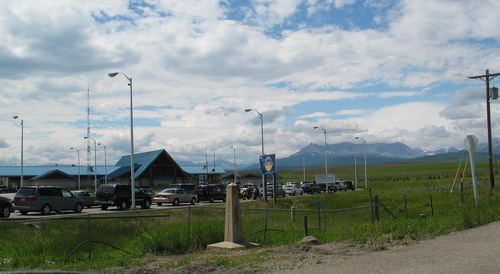
Piegan customs
Access to 'Going-to-the-Sun Road' from the East is via St Mary Visitor Center. To reach it we had to drive along the Eastern boundary of the park and a more beautiful road is hard to imagine [until you drive from Banff to Jasper!]. The mountains are exceptionally beautifully and have incredible profiles - sharp points, steep cliffs, jagged edges and huge broken pieces of rock lying at impossible angles. Here the mountains look like mountains should.

Mary Lake
In Alberta and Montana the flat land of the prairies quickly rises through a narrow band of foothills to the heights of the Rockies. Thus, it can be the height of summer at the park entrance but early spring and even winter at the summits and passes. 'Going-to-the-Sun Road' linked summer to winter.

At first the drive is through open meadowland alongside Saint Mary Lake. Conifers, cottonwoods and willows edge the lake. The mountains plunge into the lake, their appearance changing with the light but never less than impressive. These are sedimentary rocks pushed up, buckled and fractured, consequently they have lots of different habitats from deep narrow gorges through flats to screes and cliffs. There is a place here for most Western North-American plants.
The road rises rapidly with steep drops to the lake on your left as you ascend from the East. There are few barriers and it is like driving in the French Alps 25 years ago before they roads became 'safer'. 'Going-to-the-Sun Road' is well built, well surfaced and generally quite wide for a mountain road. The steep banks are covered with Penstemon fruticosus [purple], confertus [creamy yellow] and wilcoxii [Bright blue], Heuchera cylindrica, Delphinium bicolor and innumerable colour forms of Castilleya miniata. All of these are almost exclusively North American in their distribution.

Blue Penstemons
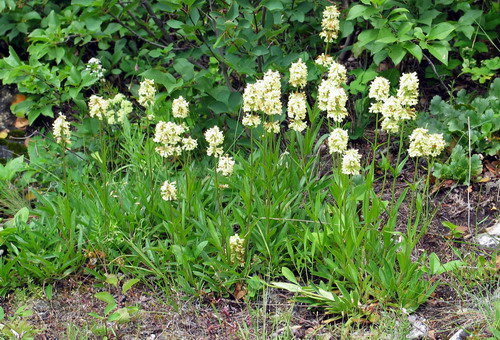
Penstemon conefertus
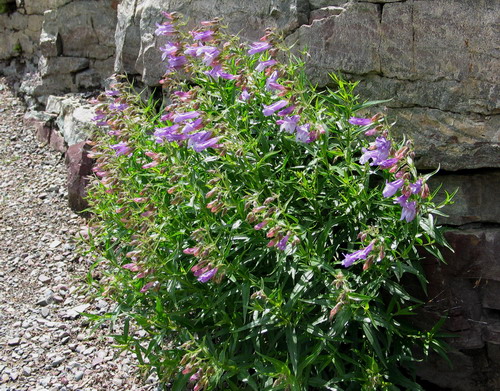
Penstemon fruticosus

The gorges and river edges are constantly wet and often moss covered. Some ferns delight in this environment and there are the odd Saxifrage plants clasping rock ledges. In the woods we found Clintonia uniflora pushing up its single white flowers through the leaf and pine litter.
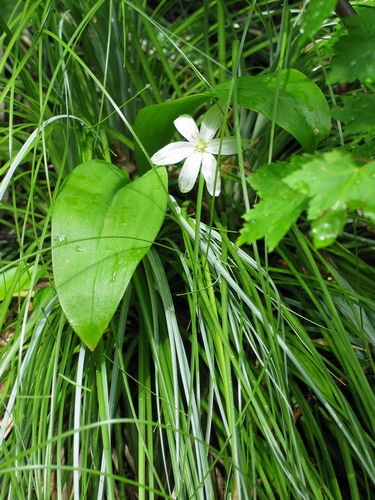
Clintonia uniflora
Quite soon the road takes a big turn and you are whisked up through springtime to find winter snow staring back across the valley at you. This is what we had come to see. Receding snow uncovers sleeping meadows which up here are full of Erythronium grandiflorum known as 'Glacier Lilies'. What could be better in Glacier Park?

Flowering time depends on snow melt so that in some areas flowers are nearly past whilst others are not yet uncovered. Under the krumholtz [stunted trees] spring comes sooner and the Erythroniums were in full flower. Up on the flats where the snow lay deeper and longer there is a succession of flowers each stage less advanced than the previous ones, until in the newly melted run of the buds are just unfurling.
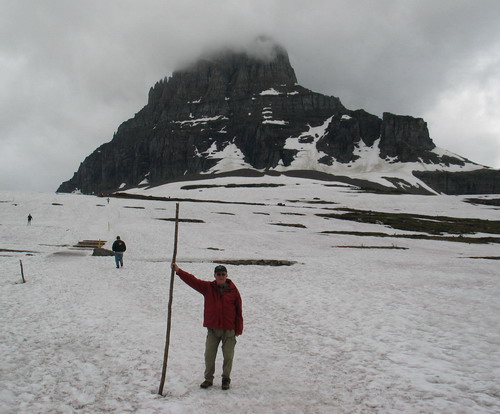

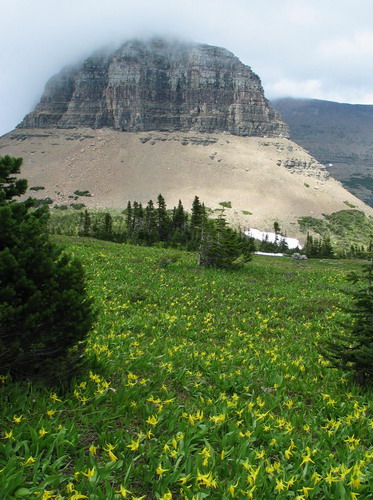
John did not exaggerate. The flowers were wonderful. Wordsworth would have been impressed with these crowds and hosts of yellow.

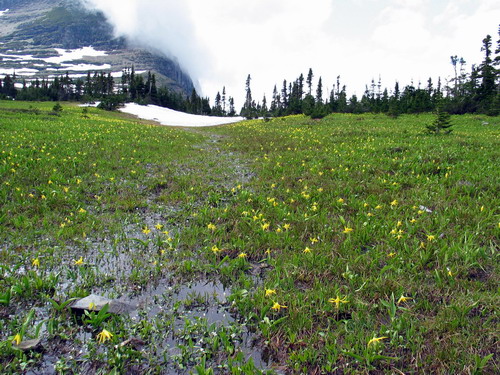
The amazing thing was that millions of flowers were identical. We found one flower which was different. It was pale cream instead of rich yellow in colour. Apparently in South-eastern Washington State and Idaho there is a subspecies, Erythronium grandiflorum candidum which has white flowers. Some plants had two or three flowers per stem.


After listening to SRGC Past President Ian talk about Erythronium I now know that stamens, pollen and anthers are important in identification. I did notice that some of the plants had yellow pollen and others had cream pollen.



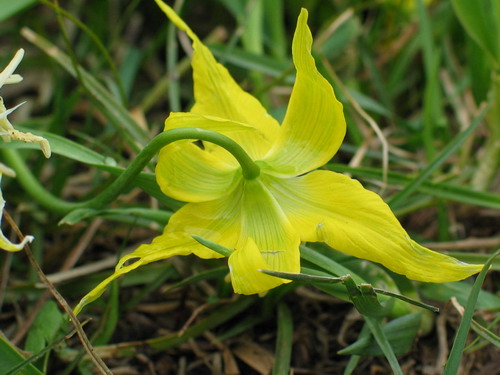

The area was almost a monoculture of Glacier lilies with the addition of a few Claytonia lanceolta [Spring Beauty] and Pulsatilla occidentalis.

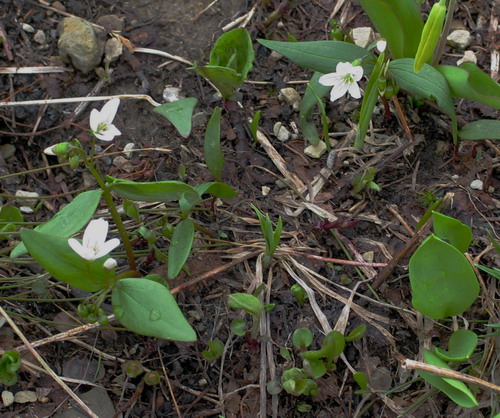
At one stage I thought I had found an unusual variation, flowers which had rounded petals instead of the expected long reflexed petals. Wrong! These flowers had been chewed in bud by a critter, probably a marmot.
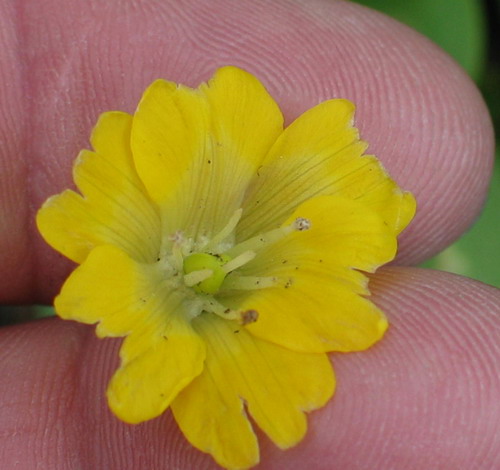


The other predator of these beautiful plants is the Bighorn Sheep. Notices round warning about the ever present danger of Grizzly Bears pointed out that they dig up the roots and eat them - and I was worried about mice and pheasants eating bulbs in the garden!
We intended to cross over to the Western side of 'Going-to-the-Sun Road but thick mist started to roll in covering first the mountain tops then the car park itself. We felt it was prudent to descend back to the East in search of some 'vitals' and the park rangers would not look kindly on our digging up nourishing Glacier Lilies to eat.
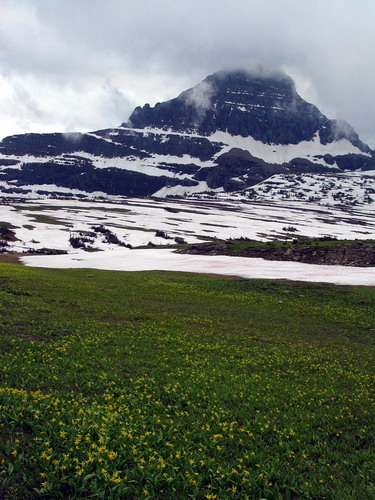
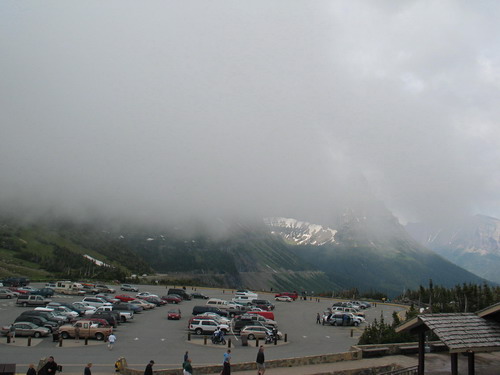

A more beautiful place you could not find - unless…you travel North into the Canadian part of park, Waterton National Park. Here the star bulb was Calochortus apiculatus, growing in open scrubby meadows beside Lower Waterton Lake.
Mountains refresh and relax us. Mountain air when it fills our lungs, inspires us and fills us with enthusiasm. These mountains are spectacular scenically and florally. Mountain flowers lift our spirits. These glacier lilies were the Speyside malts of the flower world.

Thank you John for leading us to Glacier and to the US and Canadian governments for preserving these wonderful meadows for us to enjoy.
^ back to the top ^
|

